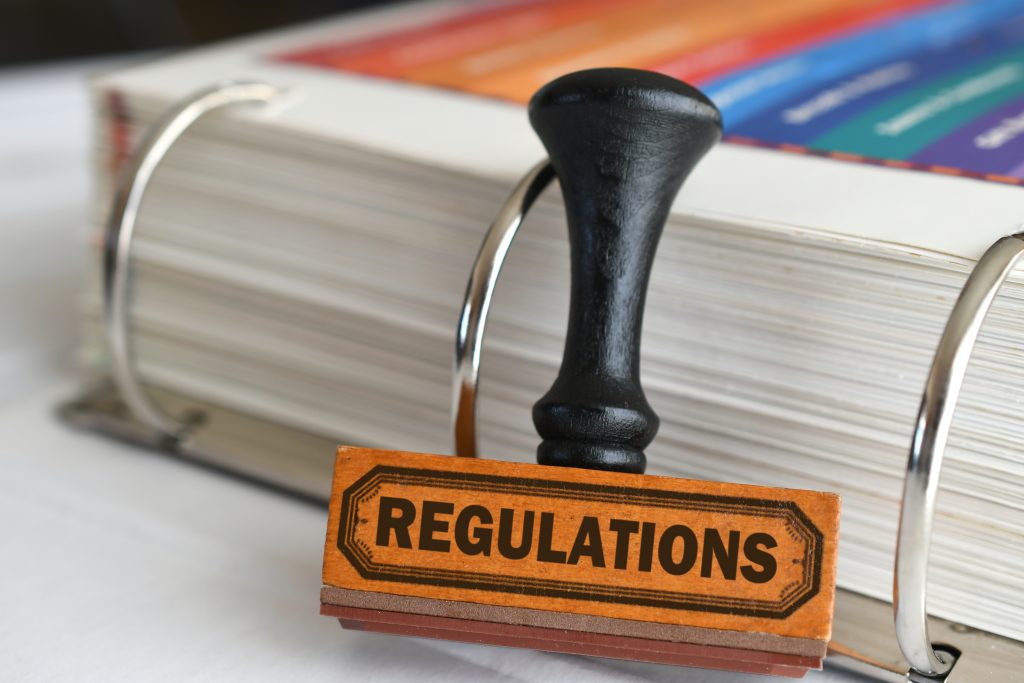
Workplace Violence Prevention Regulations and Requirements: State-by-State Guide for 2025
Workplace safety regulations are changing. In the last few years, more states have passed workplace violence prevention laws.
Many businesses are now required to provide panic buttons, safety devices, and formal workplace violence prevention plans to support employees who work in high risk environments.
States like New York, California, and Washington have already passed laws requiring employers to protect lone workers with specific technology and safety protocols. The rules vary by state, but the message is clear: workplace safety is top priority.
Let’s break down what you need to know to keep your business compliant and your employees safe.
The Rise of Workplace Violence Prevention Regulations
Workplace violence incidents are becoming more common, especially in healthcare settings and in industries where employees work along or interact with the public.
Think: hotel housekeepers cleaning guest rooms, retail workers opening stores early or closing late, and healthcare workers alone with patients or making home visits.
To give workers additional protections, governments are passing laws that require:
- Written violence prevention plans that spell out how businesses keep workers safe
- Training programs that teach employees how to handle dangerous situations
- Panic button devices that let lone workers call for help instantly
State-by-State Breakdown of Panic Button Requirements
New York Retail Worker Safety Act
When it takes effect: June 2, 2025 for training; January 1, 2027 for panic buttons
New York’s law is the most comprehensive retail worker protection we’ve seen. If you have 10 or more retail employees, you need to start preparing now.
What you need to do by June 2025:
- Train employees on de-escalation tactics
- Teach active shooter response procedures
- Cover emergency exits and meeting places
- Show workers how to use security alarms and panic buttons
- Train managers on their emergency responsibilities
What you need by January 2027 (if you have 500+ retail employees statewide):
- Provide silent response buttons that alert security, managers, or supervisors
- Train employees how to use the devices
- Make sure buttons don’t automatically call police (they’re for internal help)
Who’s covered: Retail stores selling consumer products (restaurants that mainly serve food for eating on-site are exempt)
California’s SB 553 Workplace Violence Prevention Law
When it took effect: July 1, 2024 (you need to comply now)
California’s law is huge—it covers almost every employer with one or more employees. Unlike other states that focus on specific industries, California went all-in on workplace violence prevention.
What you need to have:
- A written Workplace Violence Prevention Plan that covers:
- Who’s responsible for implementing the plan
- How employees can report violence without retaliation
- How you’ll communicate about safety issues
- Your emergency response procedures
- Training programs for all employees
- How you’ll identify and fix safety hazards
- What happens after an incident
Other requirements:
- Keep a log of violent incidents
- Review your plan every year
- Provide training in employees’ preferred languages
Who’s exempt: Some healthcare facilities (they have separate rules), correctional facilities, law enforcement, remote workers, and small workplaces with fewer than 10 employees that aren’t open to the public
Washington State Panic Button Law
When it took effect: January 2020 for hotels; January 2021 for other businesses
Washington was one of the first states to require panic buttons, and their law is specific about what devices need to do.
Who needs panic buttons:
- All hotels and motels (any size)
- Retail employers with 1+ employees
- Property service contractors (housekeeping, janitorial)
- Security companies
What panic buttons must do:
- Be portable or wearable
- Work with a single button press (no passwords)
- Send a sustained signal
- Get immediate help from security or other staff
- Show accurate location information
- Work reliably everywhere in your workplace
- Be hard for attackers to disable
- Not go off accidentally
Illinois Hotel and Casino Employee Safety Act
When it took effect: March 1, 2021
Illinois keeps it simple: all hotels and casinos need to provide portable emergency devices, regardless of size.
What devices must do:
- Activate quickly to call for help
- Provide location information
- Connect directly to hotel/casino security or designated staff
- Work for employees in guest rooms and restrooms
Additional requirements:
- Anti-harassment policies in English, Spanish, and other employee languages
- Guest notification about safety procedures
New Jersey Hotel Panic Device Law
When it took effect: January 1, 2020
New Jersey focuses on hotels, inns, motels, and boarding houses with 100+ guest rooms.
What devices must include:
- Two-way radio or electronic communication
- Immediate help summoning capability
- Portable, wearable, or pocket-sized design
- Direct communication with security or management
- Bluetooth devices with room beacons are OK
Texas Healthcare Workplace Violence Prevention
When it took effect: September 1, 2024
Texas targets healthcare facilities and home health agencies with comprehensive violence prevention plans rather than specific device requirements.
Who’s covered:
- Hospitals and nursing facilities
- Surgical centers
- Mental health facilities
- Emergency care facilities
- Home health agencies with 2+ registered nurses
What you need:
- Workplace violence prevention committees
- Annual employee training
- Post-incident medical treatment and services
- Physical security assessments
- Violence incident reporting systems
States with Pending Laws
Massachusetts: Pending
The Safer Hotels for Workers Act has been pending since 2020. It would cover hotels with 25+ guest rooms, but there’s no timeline for passage.
Minnesota: Coming Soon
The Retail Worker Safety Act passed and takes effect January 15, 2026. It requires violence prevention plans and training for retail stores, with fines up to $10,000.
Colorado: Incentive Approach
Colorado is trying a different approach—offering financial incentives to hospitals that implement violence prevention programs. Policies are required by July 1, 2026.
Major Cities Have Their Own Rules
Many cities jumped ahead with their own hotel panic button requirements:
Seattle: Hotels with 60+ rooms need portable panic buttons (since July 2020)
Chicago: All hotels need GPS-enabled panic buttons (since July 2018) – $250-$500 penalties
Los Angeles: Hotels with 60+ rooms need personal security devices plus workload limits (since August 2022)
Miami Beach: All hotels and hostels need panic buttons (since August 2019) – escalating fines from $500 to $2,000+
Other cities with similar rules: Oakland, Sacramento, Santa Monica, West Hollywood, Long Beach, Glendale, and Anaheim.
Federal Rules Are Coming
OSHA is working on the first federal workplace violence prevention standard for healthcare and social assistance. The proposed rule should come out in December 2024, with final rules in 2025.
The rule will likely require:
- Written violence prevention programs
- Workplace hazard assessments
- Engineering controls (including panic buttons)
- Employee training
- Incident reporting systems
Panic Button Technology Solutions
The good news? Modern safety technology has caught up with these regulations. You don’t need expensive, hard-wired, complicated systems to comply.
Today’s solutions include Bluetooth panic buttons, smartphone apps, and notification systems that work with your existing setup.
What’s Available Now
Bluetooth Panic Buttons: Small, wearable devices that connect to smartphones or your facility’s systems. Perfect for hotels, retail stores, and healthcare facilities that need portable solutions.
Mobile Apps: Turn existing employee smartphones into panic buttons with GPS location and team notifications. This cuts hardware costs while meeting most state requirements.
Complete Alert Systems: Platforms that handle panic button alerts, coordinate your response team, keep compliance logs, and integrate with your current security setup.
Key Features for Compliance
Internal Notifications: Most laws require alerts to go to your internal team (security, managers) rather than automatically calling 911. Modern systems let you customize who gets notified.
Location Services: Regulations want accurate location reporting. GPS and Bluetooth beacon systems handle this while working reliably indoors and outdoors.
Automatic Documentation: California and other states require detailed incident logs. Good alert systems automatically record activation times, response times, and how incidents were resolved.
Quick Setup: Many solutions offer same-day installation, so you stay compliant without downtime.
Your Next Steps
Understanding the rules is just the beginning. Here’s how to comply with these regulations without breaking your budget or disrupting your operations.
1. Identify which laws apply to you based on your location, industry, and number of employees
2. Compare technology options that meet your specific state requirements and budget
3. Plan your timeline around compliance deadlines and coordinate device rollout with training
4. Set up response procedures so your team knows what to do when someone activates a panic button
Plan for the Long Term
Keep your plans current: Most laws require annual reviews and updates. Set calendar reminders now.
Update training regularly: Laws require ongoing training, especially when you change technology or procedures.
Document everything: Keep detailed records of incidents, panic button uses, and how you responded. You’ll need this for compliance and to improve your safety program.
Maintain your technology: Test panic buttons regularly, replace batteries, and keep systems updated.
The smartest move is to get ahead of requirements in your state while building a safety program that actually protects your employees.
Take the first step toward a safer workplace today.

